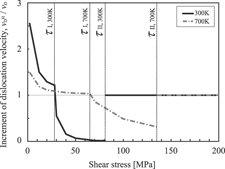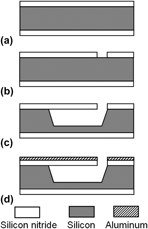Refine search
Actions for selected content:
106102 results in Materials Science
Learning from failures
-
- Journal:
- MRS Bulletin / Volume 36 / Issue 6 / June 2011
- Published online by Cambridge University Press:
- 10 June 2011, pp. 416-417
- Print publication:
- June 2011
-
- Article
-
- You have access
- HTML
- Export citation
Energy Focus: Conjugated microporous polymer networks chemically tuned for CO2 adsorption
-
- Journal:
- MRS Bulletin / Volume 36 / Issue 6 / June 2011
- Published online by Cambridge University Press:
- 10 June 2011, pp. 408-410
- Print publication:
- June 2011
-
- Article
-
- You have access
- HTML
- Export citation
Converting light to electrons in oriented nanotube arrays used in sensitized solar cells
-
- Journal:
- MRS Bulletin / Volume 36 / Issue 6 / June 2011
- Published online by Cambridge University Press:
- 10 June 2011, pp. 446-452
- Print publication:
- June 2011
-
- Article
- Export citation
Meet Our Authors
-
- Journal:
- MRS Bulletin / Volume 36 / Issue 6 / June 2011
- Published online by Cambridge University Press:
- 10 June 2011, pp. 429-432
- Print publication:
- June 2011
-
- Article
-
- You have access
- HTML
- Export citation
Quantum phase transition revealed in ultrathin films
-
- Journal:
- MRS Bulletin / Volume 36 / Issue 6 / June 2011
- Published online by Cambridge University Press:
- 10 June 2011, pp. 406-408
- Print publication:
- June 2011
-
- Article
-
- You have access
- HTML
- Export citation
Pulsed-laser hyperdoping and surface texturing for photovoltaics
-
- Journal:
- MRS Bulletin / Volume 36 / Issue 6 / June 2011
- Published online by Cambridge University Press:
- 10 June 2011, pp. 439-445
- Print publication:
- June 2011
-
- Article
- Export citation
Estroff, Liu, Nielsch, and Wada to chair 2012 MRS Spring Meeting
-
- Journal:
- MRS Bulletin / Volume 36 / Issue 6 / June 2011
- Published online by Cambridge University Press:
- 10 June 2011, p. 468
- Print publication:
- June 2011
-
- Article
-
- You have access
- HTML
- Export citation
Nuclear Safety Convention Meeting commits to learn lessons from Fukushima nuclear accident
-
- Journal:
- MRS Bulletin / Volume 36 / Issue 6 / June 2011
- Published online by Cambridge University Press:
- 10 June 2011, p. 413
- Print publication:
- June 2011
-
- Article
-
- You have access
- HTML
- Export citation
MRS volume 36 issue 6 Cover and Front matter
-
- Journal:
- MRS Bulletin / Volume 36 / Issue 6 / June 2011
- Published online by Cambridge University Press:
- 10 June 2011, pp. f1-f6
- Print publication:
- June 2011
-
- Article
-
- You have access
- Export citation
High pyroelectric properties of (Pb0.87La0.02Ba0.1)(Zr0.75Sn0.25–xTix)O3 ceramics near AFE/RFE phase boundary under DC bias field
-
- Journal:
- Journal of Materials Research / Volume 26 / Issue 11 / 14 June 2011
- Published online by Cambridge University Press:
- 31 May 2011, pp. 1441-1445
- Print publication:
- 14 June 2011
-
- Article
- Export citation
Modeling of exact viscoelastic stresses in bilayer systems due to thermal and/or lattice mismatch: Maxwell model
-
- Journal:
- Journal of Materials Research / Volume 26 / Issue 11 / 14 June 2011
- Published online by Cambridge University Press:
- 31 May 2011, pp. 1392-1398
- Print publication:
- 14 June 2011
-
- Article
- Export citation
JMR volume 26 issue 10 Cover and Back matter
-
- Journal:
- Journal of Materials Research / Volume 26 / Issue 10 / 28 May 2011
- Published online by Cambridge University Press:
- 24 May 2011, pp. b1-b5
- Print publication:
- 28 May 2011
-
- Article
-
- You have access
- Export citation
Atomistic study of the competitive relationship between edge dislocation motion and hydrogen diffusion in alpha iron
-
- Journal:
- Journal of Materials Research / Volume 26 / Issue 10 / 28 May 2011
- Published online by Cambridge University Press:
- 24 May 2011, pp. 1269-1278
- Print publication:
- 28 May 2011
-
- Article
- Export citation
JMR volume 26 issue 10 Cover and Front matter
-
- Journal:
- Journal of Materials Research / Volume 26 / Issue 10 / 28 May 2011
- Published online by Cambridge University Press:
- 24 May 2011, pp. f1-f5
- Print publication:
- 28 May 2011
-
- Article
-
- You have access
- Export citation
The energetics of La4LiAuO8
-
- Journal:
- Journal of Materials Research / Volume 26 / Issue 10 / 28 May 2011
- Published online by Cambridge University Press:
- 24 May 2011, pp. 1188-1192
- Print publication:
- 28 May 2011
-
- Article
- Export citation
Size-dependent strength in nanolaminate metallic systems
-
- Journal:
- Journal of Materials Research / Volume 26 / Issue 10 / 28 May 2011
- Published online by Cambridge University Press:
- 23 May 2011, pp. 1179-1187
- Print publication:
- 28 May 2011
-
- Article
- Export citation
Silica replication of the hierarchical structure of wood with nanometer precision
-
- Journal:
- Journal of Materials Research / Volume 26 / Issue 10 / 28 May 2011
- Published online by Cambridge University Press:
- 23 May 2011, pp. 1193-1202
- Print publication:
- 28 May 2011
-
- Article
- Export citation
A novel biomimetic material duplicating the structure and mechanics of natural nacre
-
- Journal:
- Journal of Materials Research / Volume 26 / Issue 10 / 28 May 2011
- Published online by Cambridge University Press:
- 19 May 2011, pp. 1203-1215
- Print publication:
- 28 May 2011
-
- Article
- Export citation
Thermal arrest analysis of thermoelastic martensitic transformations in shape memory alloys
-
- Journal:
- Journal of Materials Research / Volume 26 / Issue 10 / 28 May 2011
- Published online by Cambridge University Press:
- 19 May 2011, pp. 1243-1252
- Print publication:
- 28 May 2011
-
- Article
- Export citation
Measurements of residual stresses in Al film/silicon nitride substrate microcantilever beam systems
-
- Journal:
- Journal of Materials Research / Volume 26 / Issue 10 / 28 May 2011
- Published online by Cambridge University Press:
- 19 May 2011, pp. 1279-1284
- Print publication:
- 28 May 2011
-
- Article
- Export citation











